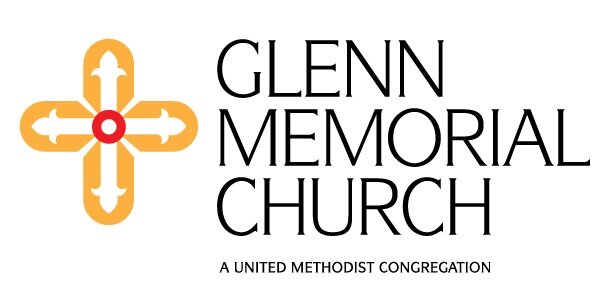It sounds like something straight out of a Dan Brown thriller – obscure Christian symbols that convey hidden meanings and messages.
Just like Brown’s protagonist, Harvard University symbologist Robert Langdon, it’s possible for us to crack the code of Christian cryptograms and symbols to learn the deeper message.
In May 2015, Dr. Anthony A. Briggman, Assistant Professor of the History of Early Christianity at Emory University’s Candler School of Theology, spoke to Glenn’s New Class Sunday School on the topic of “Images of Christ in the Early Church.”
Many of us are familiar with the Christian fish symbol, used in ancient times to quietly indicate the presence of a Christian community without bringing on persecution by the Romans. Dr. Briggman explained to the class that an anchor was also an early secret symbol of Christianity, among many others. He explained that symbols are found on everything from unassuming marks on the ground in ancient Ephesus to impressive pieces of artwork displayed on historical church walls.
I asked Dr. Briggman if he could explain some of the symbols at Glenn – the ones we see every Sunday in the choir behind the ministers – the gold cross with six symbolic squares.
“Symbols by definition are meant to express something hidden or abstract,” Dr. Briggman said. “These symbols speak to the person of Christ and the sacramental rites central to the communion of faith.”
Here’s Dr. Briggman’s explanation of the Glenn cross and six square symbols surrounding it, moving from top to bottom:
The central symbol is a cross with a red sign toward the top. The glory and majesty of this golden cross is itself meant to form a telling contrast with the original, rough-hewn cross. We are meant to think of Jesus in the same way: as glorified not suffering. The letters on the red sign (INRI) constitute an acronym formed by taking the first letter of the Latin words on the original sign (Jn 19:19-20): Iesus Nazarenus, Rex Iudaeorum = Jesus of Nazareth, King of the Jews (the Latin alphabet uses an I instead of J).
With regard to the square symbols. The top tier represents the central sacraments of the Christian faith, the two initiated by Christ himself: the Eucharist and Baptism.
The symbol on the top left is the most easily discernible of all: the Eucharistic wafer being dipped into the cup. The letters placed on the bread (INRI) make a strong theological statement: this is the body of Christ broken for you on the cross (where the letters also occur). By taking the Eucharistic bread and cup we participate in – somehow commune with – the body and blood of Christ (1 Cor 10:16-17).
The symbol on the top right is the traditional symbol of baptism: the scallop shell. The symbol likely has its origin in the use of a seashell to pour water over the head of the baptizand. In this case the symbol includes a further layer of meaning: three drops of water – meant to remind us that we baptize in the name of the Father, Son, and Holy Spirit.
The remaining four symbols have to do with Jesus.
The symbols in the middle tier combine to represent his name and title. The symbol on the middle left provides the capital letters of the first three letters of the Greek word for ‘Jesus’: I-H-S (iota – eta – sigma; sometimes the sigma is represented by a C instead of an S). The symbol on the middle right provides the capital letters of the first two letters of the Greek word for Christ: X-P (chi – rho). So the person familiar with these acronyms will read the middle tier: ‘Jesus Christ’.
We are left with two symbols on the bottom tier.
The symbol on the bottom left is formed by an ornate Alpha = Α (top left) and Omega = Ω (bottom right), the first and last letters of the Greek alphabet. A reference to Rev 1:8 in which the Lord declares himself to be the Alpha and Omega, the Beginning and End. There is a further layer of symbolism here. Layered on top of the Alpha is a cross, and layered on top of the Omega is an anchor, an ancient cryptogram used to represent the cross of Christ (if you ignore the flukes at the bottom, the stock and shank form a cross).
The symbol on the bottom right is a version of the five-fold cross. It has no consistent meaning, being variously interpreted as representing the five wounds of Christ (one for each hand, one for each foot, and one for his side), Christ and the four evangelists, or Christ and the four corners of the world.
“Symbols can be rich lenses into your theological tradition or just so much scenery – it all depends on whether you know what they stand for,” Dr. Briggman said.
We may not be the hero in a Dan Brown thriller, but understanding the hidden meanings of the symbols around us can make the message we’re hearing that much more thrilling.
Dena Mellick
The Glenn Communications Committee
Special thanks to Candler’s Dr. Anthony Briggman for sharing his expertise.

